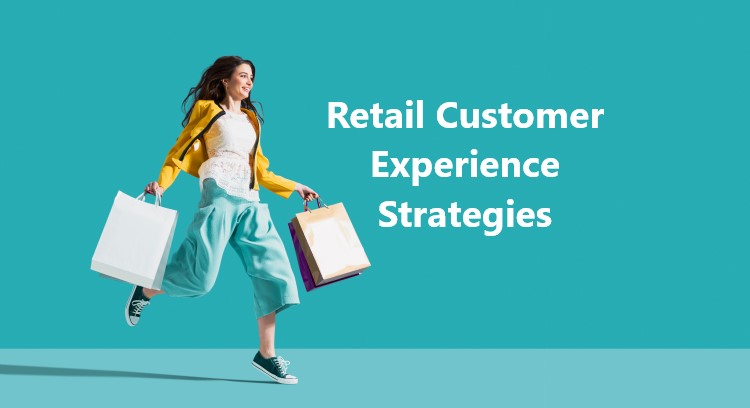
Personalization Techniques
Personalization techniques are key to effective retail customer experience strategies. By using customer data, retailers can tailor shopping experiences to individual needs and preferences. This personal touch enhances customer satisfaction and drives loyalty and sales.
In-store, personalization may involve sales associates using customer profile information to make personalized product recommendations. For example, if a customer often buys a certain brand or style, the associate can highlight new arrivals or promotions that match these preferences. Retailers can also deploy technology like digital kiosks or mobile apps to offer personalized messages and deals when a customer enters the store or a particular department.
Online, personalization manifests through customized web experiences. Algorithms analyze past behavior to tailor webpage layouts, featured products, and special offers for each visitor. Email marketing can be highly personalized too. You can promote targeted offers based on past purchases, browsing history, and even significant dates like the customer’s birthday.
Additionally, personalization extends to the design of promotions and interactions. By segmenting your customer base, you can send more relevant communications, which likely increases engagement and reduces unsubscribe rates.
By effectively applying personalization techniques, you ensure your retail business not only meets but anticipates your customers’ needs. This focus on personalization distinguishes your brand in a crowded market and strengthens your reputation as a customer-centric retailer.
Technology Integration
Technology plays a pivotal role in modern retail customer experience strategies. Integrating advanced tech solutions like mobile apps, augmented reality (AR), and self-checkout systems can significantly enhance the way customers interact with your brand, both online and in-store.
Mobile apps are essential for on-the-go access, offering customers a seamless shopping experience from their smartphones. These apps can provide functionalities such as in-app purchases, personalized notifications about promotions, and the ability to check item availability in stores near them. Some apps even include loyalty programs. Customers can collect points and redeem rewards directly from their mobile device, enhancing engagement and encouraging repeat business.
Augmented reality takes the shopping experience to another level. In retail sectors such as home decor or fashion, AR allows customers to visualize products in their own space or on themselves before making a purchase. For instance, a furniture store’s app might let you see how a new sofa would look in your living room, adjusting for space and lighting conditions. This technology not only entertains but also empowers customers to make more informed decisions.
Self-checkout systems are increasingly common in physical stores, speeding up the payment process and reducing wait times. These systems allow customers to scan and pay for their goods without assistance, catering to those who prefer a quick, minimal-contact shopping experience. They also free up staff to assist customers in other ways, improving service levels across the store.
By incorporating these technologies into your retail operations, you can offer more personalized, efficient, and engaging shopping experiences. Such tech enhancements are now expected by consumers and are critical in maintaining a competitive edge. This focus on technological integration is a cornerstone of successful retail customer experience strategies today.
Customer Service Training
Customer service training is a vital component of effective retail customer experience strategies. By ensuring that your staff is well-trained in customer service excellence, you can guarantee consistent, high-quality interactions that enhance satisfaction and loyalty.
Training programs should focus on teaching employees key communication skills, problem-solving techniques, and product knowledge. Equipping your team with these skills enables them to handle inquiries and issues efficiently, ensuring that every customer interaction is positive and productive. Moreover, trained employees are better prepared to meet customers’ needs proactively, often exceeding expectations and fostering a strong connection between your brand and your customers.
In addition to basic service skills, advanced training sessions can cover emotional intelligence and conflict resolution, which are crucial in managing challenging situations. Employees who can empathize with customers and navigate difficult conversations gracefully are invaluable assets to any retail operation.
Furthermore, regular refresher courses can help maintain high standards and introduce new service concepts as customer expectations evolve. This ongoing education ensures that your team remains competent and confident in their roles, which is essential for delivering a consistently excellent customer experience.
By prioritizing customer service training, you not only enhance the capabilities of your staff but also strengthen your business’s reputation. This commitment to quality service helps distinguish your brand in a competitive market and is a key factor in achieving sustained success.
Omni-channel Shopping
Omni-channel shopping is a cornerstone of modern retail customer experience strategies. It refers to providing a seamless shopping experience across multiple channels, including online platforms, mobile apps, and physical stores. This approach allows customers to interact with your brand in a way that is most convenient for them, whether they are at home, on the move, or in your store.
One of the key benefits of omni-channel shopping is increased customer satisfaction. When customers can browse products online, check availability on their mobile device, and pick up in-store—or any combination of these—shopping becomes a convenient and flexible experience. This convenience can lead to higher sales and improved customer loyalty as shoppers appreciate the multiple ways they can interact with your brand.
Furthermore, an omni-channel approach provides valuable data on customer preferences and behavior. By tracking how customers use different channels, you can gain insights into their shopping habits, preferences, and pain points. This data can then be used to refine your marketing strategies, inventory decisions, and even influence product development.
By integrating systems and ensuring that all channels are aligned and cohesive, you create a unified brand experience. This consistency reassures customers and builds trust, as they know they will receive the same high-quality service online, on mobile, or in-store.
Incorporating omni-channel strategies effectively requires careful planning and execution but offers significant rewards in enhancing your retail operations and customer satisfaction. By focusing on seamless integration, you ensure that every customer interaction adds value, driving growth and enhancing your competitive edge in the market.
Loyalty Programs
Loyalty programs are a crucial part of retail customer experience strategies, effectively enhancing customer retention and boosting overall satisfaction. These programs reward customers for their continued patronage, providing incentives that encourage repeat visits and purchases.
An effective loyalty program offers more than just points or discounts. It creates an emotional connection with the brand by making customers feel valued and appreciated. For example, personalized rewards based on customer preferences or purchase history can significantly enhance the perceived value of the program. This personal touch shows that you understand and appreciate your customers’ unique needs and tastes.
Additionally, loyalty programs provide an excellent opportunity to gather more detailed data about your customers. By monitoring the items they purchase, their spending habits, and the rewards they redeem, you can refine your marketing strategies and tailor your product offerings to better meet their needs. This targeted approach not only improves customer satisfaction but also drives sales.
Integrating technology can further enhance the effectiveness of your loyalty programs. Mobile apps allow customers to track their rewards easily, receive updates, and even access exclusive offers that increase engagement and convenience.
By incorporating these elements into your loyalty programs, you ensure they are an integral part of your efforts to retain customers and enhance their shopping experience. Effective loyalty programs are a testament to the value of investing in your customers. This contributes significantly to sustaining long-term business growth.
Feedback and Continuous Improvement
Feedback and continuous improvement are vital components of effective retail customer experience strategies. Gathering customer feedback is crucial as it provides insights into what your customers think about your products, services, and their overall shopping experience.
One effective way to collect feedback is through post-purchase surveys. You can send these via email or offer them at the end of a shopping experience on your website. Ensure these surveys are brief to encourage more responses. Focus on aspects like satisfaction with the purchase process, product quality, and customer service.
Another strategy involves utilizing social media platforms. Customers often share their experiences and provide honest feedback more freely here. Regularly monitor these platforms, not just for feedback but also to engage with customers directly and address any concerns they express.
You can also set up feedback kiosks in-store. These allow customers to easily provide immediate feedback about their shopping experience while it’s fresh in their mind. This method can be particularly useful for capturing the in-store experience that online surveys might miss.
Once you gather this feedback, it’s crucial to analyze the data and identify common themes or issues that need addressing. This could lead to changes in store layout, staff training programs, or improvements in product offerings.
Acting on customer feedback demonstrates that you value their input and are committed to improving their shopping experience. This not only helps refine your operations but also strengthens customer loyalty, as shoppers see their suggestions being implemented. Remember, continuous improvement is about making ongoing adjustments based on what your customers tell you. This ensures your retail operations remain competitive and responsive to customer needs.
Conclusion
In conclusion, effective retail customer experience strategies are essential for any business aiming to succeed in today’s competitive market. From personalizing the shopping experience to integrating cutting-edge technology, each strategy plays a vital role in shaping how consumers perceive your brand. By focusing on these key areas, you ensure that every interaction adds value and enhances customer satisfaction. Remember, the goal is to create a seamless, engaging, and enjoyable shopping experience that keeps customers returning. By continuously seeking feedback and adapting to customer needs, you set your retail business up for long-term success.


